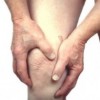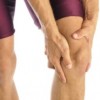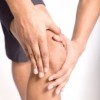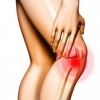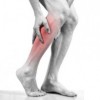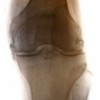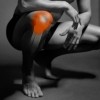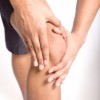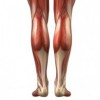Knee & Lower Leg
Osteoarthritis is a chronic degenerative disorder that is also referred to as joint degeneration but you will probably have heard most people use the term "joint wear & tear".
Symptoms initially start as mild knee pain and stiffness. The pain is likely to feel generalized rather than a pin point pain location. Gradually as the joint becomes more and more degenerated the joint pain symptoms will be coupled by intense stiffness leading to severe stiffness and painful joint locking.
Lateral Collateral Ligament Sprain & Tear
This condition article is currently being processed by Clinic HQ. All articles will be processed and uploaded as soon as possible. Thank you for your patience.
Medial Collateral Ligament Sprain & Tear
This condition article is currently being processed by Clinic HQ. All articles will be processed and uploaded as soon as possible. Thank you for your patience.
Posterior Cruciate Ligament Sprain & Tear
This condition article is currently being processed by Clinic HQ. All articles will be processed and uploaded as soon as possible. Thank you for your patience.
A calf strain, commonly known as tennis leg involves a tear or partial tearing of one or more of the calf muscles causing pain in the back of the lower leg. A calf strain is a common injury and effects people of all ages in particular those between the ages of 35-50. It is normally seen in individuals who partake in a lot of athletic sports in particular tennis and sprint running.
Symptoms include a sudden sharp burning pain, initially concentrated along the inside of the calf muscle or behind the knee. In some cases a tearing or snapping noise is heard during the injury. In most instances a calf strain will mean that the player or runner is unable to continue. The tear or rupture will be accompanied by severe swelling and bruising that will be incredibly tender to touch.
Rheumatoid Arthritis in the knee
Rheumatoid arthritis (RA) is a relatively common condition affecting three times more women than men and normally developing between the ages of 40 to 50, although it can affect people at any age. RA has the ability to develop in any joint of the body but most commonly it affects the wrists, hands, ankles and feet. It normally develops symmetrically affecting the same joint on both sides of the body.
Symptoms begin as joint and muscle stiffness, particularly in the early mornings with symptoms starting to ease 2-3 hours after getting up. After a few weeks the same joints that have been stiff may become painful and swollen. The pain will feel like a deep throbbing ache that is aggravated by rest and certain levels of activity. The swelling levels during a flare up also cause the skin around the joint to be extremely tender and slightly warm to the touch.
Pre-patellar bursitis, also known as housemaid's knee, most commonly occurs as a result of injury from continuous pressure, such as kneeling or repetitive strenuous activity. These factors put more pressure over the bursa, irritating it and triggering a painful inflammatory reaction (swelling). This risk of developing bursitis is greater in those whose jobs or hobbies involve a lot of repetitive kneeling, for example carpet fitters and gardeners.
Symptoms normally include a constant dull ache or burning pain over the knee cap, which is aggravated by any touch, pressure or movement of the knee joint. There will normally be noticeable swelling around the front of the knee. In cases of bursitis caused by infection the skin around the affected joint will appear to be red and will feel incredibly warm to the touch with additional symptoms of a high temperature and feverish chills.
Pes anserine bursitis most commonly occurs as a result a repetitive strenuous activity that encourages the thigh muscles which attach to the lower leg, to tighten and shorten from overuse. Symptoms normally include a constant dull ache or burning pain on the inside of the knee, below the knee cap, which is aggravated by any touch, pressure or movement of the knee joint. The pain can refer to the front and back of the knee and down into the lower leg and there will normally be slight swelling around the knee.
In cases of bursitis caused by infection the skin around the affected joint will appear red and will feel incredibly warm to the touch. Additional symptoms are high temperature and feverish chills.
Lower Leg - Myofascial Pain Syndrome (muscle pain)
Myofascial pain (muscle pain) can result from sprains or strains of a joint, excessive repetitive movements and high stress levels. Risk factors like poor posture, fatigue, heavy lifting and even muscle weakness may make you more susceptible to myofascial pain. Specific causes like stress, normally cause quite a lot of tension in the upper back and neck which can then lead to quite bad headaches.
Symptoms range from a sudden sharp pain, spasms and burning pain to a gradual build-up of a dull ache and discomfort that is worse in the evening after long days at work or activity. Muscle knots and trigger points can cause pain to refer from the injured muscle to the surrounding areas.

